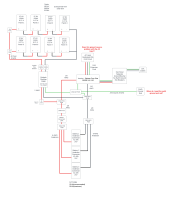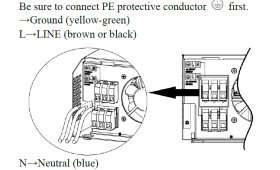hereforthefreecoffee
New Member
Hi all,
New to the DIY solar world and looking for a system review with a few questions. I recently purchased the inverter, charge controller, batteries, and panels from Craigslist and am purchasing the rest of the wiring, fuses, PDBs, etc. new.
The goal for this system is to siphon off some of my electrical needs to reduce my overall monthly costs: office, portable air conditioner, extra refrigerator, etc.
Here are the main components I've purchased already used.
Questions:
Here is the diagram I came up with with details.

Thanks!
New to the DIY solar world and looking for a system review with a few questions. I recently purchased the inverter, charge controller, batteries, and panels from Craigslist and am purchasing the rest of the wiring, fuses, PDBs, etc. new.
The goal for this system is to siphon off some of my electrical needs to reduce my overall monthly costs: office, portable air conditioner, extra refrigerator, etc.
Here are the main components I've purchased already used.
- Panels: 8 REC 250W
- Inverter: Sigineer 3000W 24V 120V
- Charge Controller: Outback FlexMax FM80
- Batteries: 3 Beckett Lithium Ion (not Lifepo4) 3 x 24V at 40ah.
Questions:
- Grounding - when do I need a true earth ground with ground rod.
- If I use the AC input on the inverter, does this pull the ground from the house?
- If I do NOT use the AC input for the inverter, do I need the earth ground/rod?
- Fuses - Am I missing any fuses or safety mechanisms?
- General mistakes - I've looked at a lot of videos and common newb mistakes and I think I've over engineered and over wired everything based on the component manual recommendations.
- The panels are over for voltage recommendations but they are used from a solar farm so they are not going to be hitting the max.
- Calculations - does anything look funky for the calculations or unsafe?
Here is the diagram I came up with with details.

Thanks!





